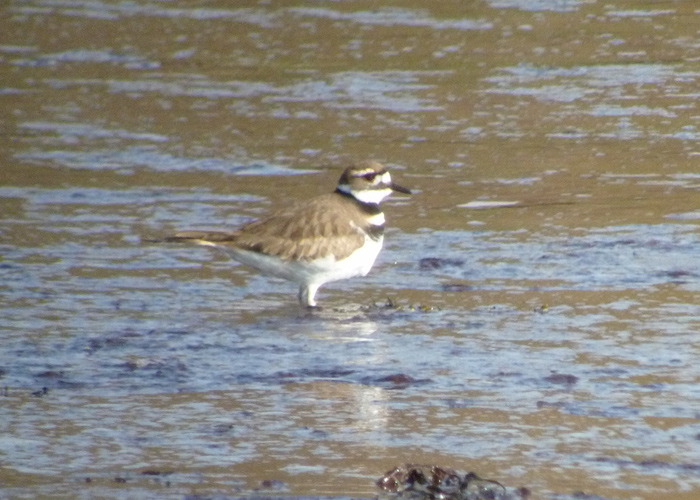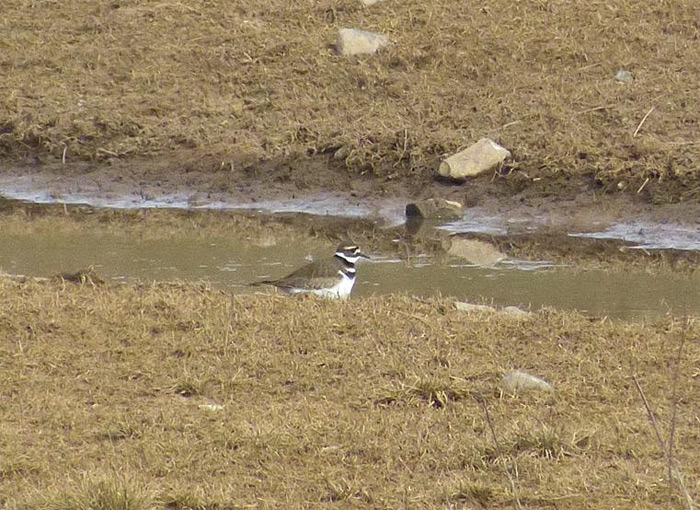Lightning does strike twice...
A very Good Friday…
I was looking forward to the Easter weekend, a four day trip to Fermanagh to visit my partner’s family also means an opportunity to head west to the Donegal and Sligo coast for some birding. This criminally under-watched area, blessed with fine scenery, habitat and birdlife has been kind to me, Gyrfalcon, American Herring Gull, Kumlien’s Gulls, 2 King Eiders and 5 Surf Scoters being the highlights of past trips.
Typical Northern Ireland hospitality meant I was out birding a little later than planned on Good Friday morning but within an hour’s drive I was birding sites around Donegal Bay. Nothing of great note was revealing itself, the bitter easterly breeze was not helping and I decided to give up on the sea and estuary birding to head to Killybegs for a fix of white wingers.
As ever, Killybegs did not disappoint! Even before the fish quays were in sight, I’d picked out three Glaucs and an Iceland loafing with several hundred big gulls at the north end of the harbour. Shortly before 3pm, I turned my attention to a couple of hundred Common Gulls that were feeding on the exposed mud close to the R263 road bridge. Hopes of Ring-billed Gull were knocked in to touch as a small brown plover walked into view. This was no Ringed Plover though, the attenuated rear end and flash of an orange rump as it shook its feathers had transported me right back to Texas! Killdeer!!! Uttering a few choice words I scrambled for the camera and secured a few shaky record shots. It performed well for a few minutes, feeding in typical plover run pause manner showing off its fine twin black breast bands, all dark bill and beautiful deep orange eye ring. Nervous, bobbing its head and crouching often when gulls flew close by, inevitably, it took flight, as did I. Making for the car, I relocated to the road bridge and after a frantic ten minutes, I picked it up again at close range, half hidden behind rocks.

Using the car as I hide, I managed a few more quick shots but again it flew, uttering a high pitched drawn out “ku-weeeee” as it headed away towards the far side of the harbour, the call still audible at some distance. The long wings, with striking white wing bars, and long dark ended tail with a white tip and warm orange rump gave it a rakish structure but I wasn’t keen on seeing it flying off! Willing it to land again, it thankfully did, but out of sight in an inaccessible area where the river runs into the estuary. An hour passed before it revealed itself once more, settled on the east shore from where I managed a few more digi-scoped shots and a couple of short video clips.
With both myself and the bird a bit more settled now, and with the tide almost fully in, I was able to savour the moment, bathed in the late afternoon sunshine as it rested, head still bobbing nervously now and then on the seaweed covered shoreline rocks But at about 16:40 it took flight again, calling and flew low out of sight, up the river channel and that was the last I saw of it. Despite sterling efforts by the assembled ‘crowd’ of three the next day, it was not seen again Fantastic bird, fantastic place, fantastic Good Friday!
Fast forward to the morning of Sunday 7 April, back down to earth on the local patch of Alston Reservoirs on the edge of Longridge in Lancashire. I’d arranged to meet up with friends Ian and Michelle Walker to fit some new interpretation boards to the viewing screens at Alston Wetland, the site of a decommissioned reservoir which is now being managed for breeding waders under a Higher Level Stewardship agreement put together in my capacity as the RSPB’s Bowland Wader Project Officer. More on the project can be found here: http://www.rspb.org.uk/ourwork/projects/details/237276-bowland-wader-project
It was a pleasant calm, sunny morning and the waders were proving a distraction from work, an increase in numbers and activity being evident, the site’s Lapwing and Redshank in particular noisily scrapping for territory. At 10:00 I was scanning south over the Ribble Valley from near the eastern viewing screen in the hope of connecting with an Osprey that had just been seen flying up the river a few miles away at Brockholes, when I heard a call that had me saying to myself, ‘surely not, I must be losing the plot here’! The ‘kleeeee’ call continued, coming closer all the time until it sounded right overhead, but I just couldn’t see the bird. Frantically scanning over the Wetland, finally there it was, a stunning Killdeer slowly dropping in to the site!
I rang Ian who was at the central screen and said ‘there’s a strange wader flying round calling over the Wetland, try and get on it’. I simply couldn’t bring myself to say it was a Killdeer, such was the disbelief! Legging it down to join Ian and Michelle at the central screen, a frantic scan quickly revealed those familiar pair of black breast bands in full view, it was then I could finally bring myself to say it, ‘it’s a ******* Killdeer Ian’!

Once a few photos had been secured and disbelief replaced with big grins - we’ve grafted for eight years for a rarity at Alston! ~ I had to think about the implications of putting news out. This had not been a problem at Killybegs but Alston Wetland is a small site situated along a shared private lane where access and local parking is an issue. There are also a few more birders in northwest England than northwest Ireland! Optimistically, thinking ahead when planning the site infrastructure I’d spoken to a local contractor, who also built the site’s Sand Martin bank, about using his yard for parking, and the local farmer, whose livestock graze the site to manage the wader habitat, about opening up a field should the need arise. They were both fine with this when it was discussed a few years back so I made the calls. Typically, neither were answering their phones and a barrage of texts and phone calls from local birders were also frying my phone! I won’t bore you with any more details but eventually, arrangements were sorted and I finally had some time to enjoy watching the bird.
And what a bird for the local patch. It performed well feeding along the scrape edges and short grassland managing to keep a low enough profile to avoid the attentions of the territorial residents for the most part. At one point though it took flight and disappeared high to the east but returned within ten minutes calling again much to the relief of local birders who had arrived as it was flying off. Later arrivals were to be disappointed as at 11:50 it was seen to fly off again and not return for the rest of the day. A brief sighting on the following day by one lucky birder (who’d also seen it on the Sunday) failed to cheer those trying again for the bird that day as it was not seen subsequently.
What odds finding a Killdeer in County Donegal only to repeat the experience ten days later on your local patch in Lancashire. I’ve no idea whether it’s the same individual or not. I’m just grateful it stuck around for the forty or so who got there in time to see it. Us birders can be a doubting bunch sometimes, and I’d have had trouble believing the events of the past ten days myself if the Alston bird had flown straight over without stopping! And no, I didn’t put a bet on the Grand National this year nor do I do the lottery. Maybe I should....
Gavin Thomas
April 2013





